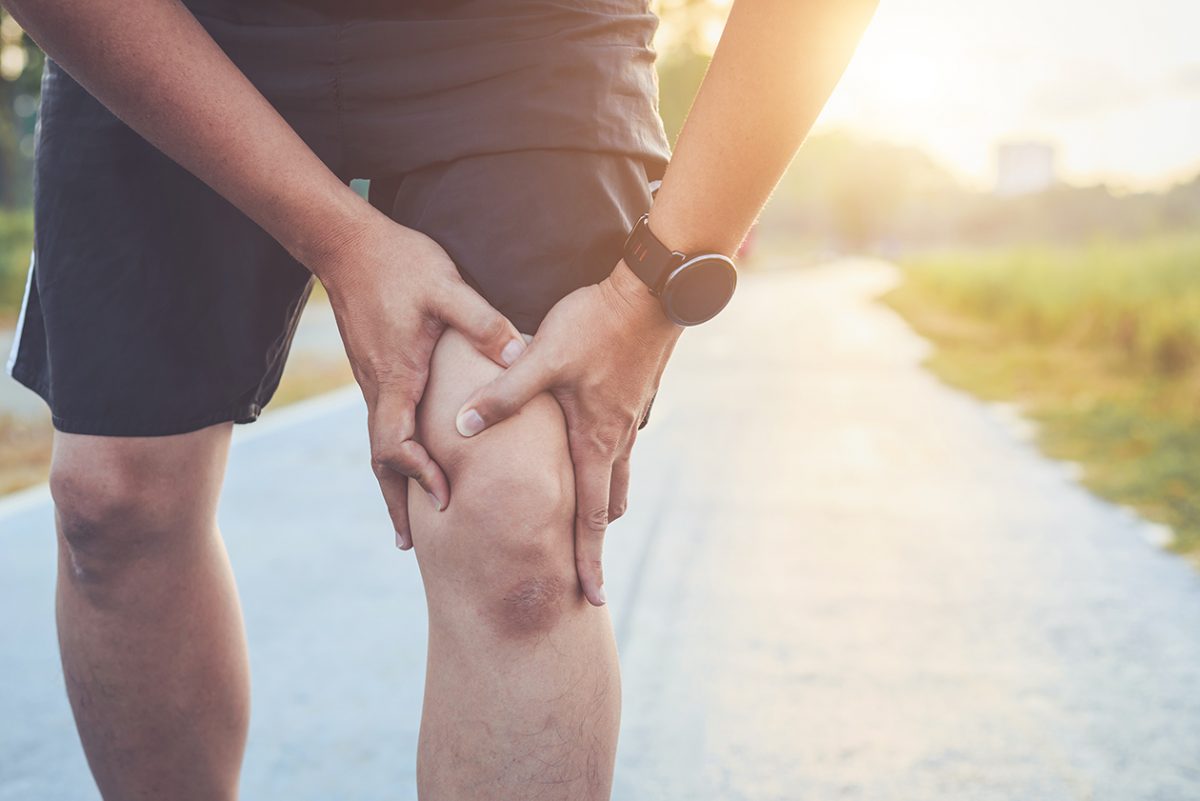Gitta Molnár started running ten years ago. First short distances, then longer and longer. “Balaton Supermarathon” in Hungary in 2016, Schnebelhorn Panoramatrail in 2017, Three Countries Marathon in 2018 … The list of her races became longer with every year.
In March 2019, an ultra run was on the schedule, 50 kilometers every day for four days – Molnár reached 4th place. Then the Zurich Marathon in April with good results and in June 2019 the 100-kilometer run of Biel. Gitta Molnár was 2nd place in her age category. “That was a very special experience. But it was too much for my left knee,” says the 37-year-old amateur runner looking back.
The knee causes problems
Even before that, her knee had started to bother her. “I couldn’t run well anymore.” Molnár began researching on the Internet, but found no good information that would have helped her. The pain at the front of her kneecap grew worse and eventually forced her to take a break from running. “It was bad.”
In July 2020, the runner finally found a doctor who could tell her what was wrong: patellar tendinitis, was the diagnosis. Her left patellar tendon was chronically inflamed and was already damaged. She would have to be prepared for a long healing process that would take at least six months, predicted Martin Narozny, head of medicine at the Sports Medical Center in Zurich.
“You train so much – and suddenly you’re not allowed to do anything. It’s hard, mentally as well,” says Gitta Molnár. Instead of the usual training, she now used autohemotherapy, shock wave treatments, stretching and physical exercises at home, and massage or physical therapy once a week.
Isokinetic Trianing
The heart of her therapy was three series of isokinetic training. This involves strapping the patient into a special chair and clamping the leg into the isokinetics “machine.” It ensures that the workout is performed with changing resistance at each angle, and at the individual maximum at each angle.
“With the classic training machines, where a weight is set, the muscle is only maximally loaded at one angle and is underloaded over the rest of the movement. The Isokinetics machine ensures that you can train at your individual max at every point during the movement. The machine measures the force and adjusts the resistance at every moment,” explains Sarina Fröhlich, a physiotherapist and sports physiotherapist at Medbase Sports Medical Center in Zurich.
The diagnostic use of isokinetics
“Isokinetics can be used not only therapeutically, but also diagnostically,” says Sarina Fröhlich. “It’s a pretty good way to see where you stand in training or rehabilitation.” Before training, a test is performed on the isokinetics “machine.” This involves measuring and recording strength and its progression. This can identify coordinative deficits, maximum strength deficits in lateral comparison and muscular imbalances within the leg. Targeted training can then be performed on the deficit, tissue loading capacity can be increased, and progress can be measured.
Isokinetic training is always a supplement to further treatment, “it is never the sole method,” emphasizes physiotherapist Rebecca Steinemann. She guided Molnár on the machine. Physiotherapy guidance is a must, Steinemann says.
Little by little, the runner was allowed to exert more and more force in a controlled manner during the isokinetic training. The strength curve is visible to the therapist and the runner on the screen and can be checked at any time.
The possible applications of isokinetics
In principle, isokinetic training can also be used for shoulder or Achilles tendon problems. The most common use, however, is on the knee. Whether after a ligament surgery, a patellar tendon tear, because of femoropatellar syndrome or – as in Gitta Molnár’s case – because of patellar tendinopathy.
“Even after weeks of treatment, the pain was still bad. The knee hurt for a long time,” the runner recalls. “At a time like that, you have to stay strong, even in your head.”
A highlight for Gitta Molnár was the “AlterG” training: “Stripped” of her own body weight, the runner was allowed to train on this special treadmill over and over again, half floating, so to speak, from the fall of 2020. It was “wonderful”, she still raves now.
“The knee does not live on strength alone,” Sarina Fröhlich admits. “That’s why isokinetic training alone was not enough. It needs additional exercises for stability, for example.” For six months, Molnár completed her convalescence program, which, in addition to isokinetics, included normal strength training, stretching exercises, stability exercises, deep friction and trigger point therapy.
Molnàr concludes.
“It was worth it,” the pissed-off runner says now. At the end of December 2020, her doctor gave her the green light to go for a short jog for the first time. In the meantime, Molnár is once again covering 35 kilometers per week. She has not yet reached her former level though, “Back then, I ran 60 to 80 or even 100 kilometers a week.”
Nevertheless, she is satisfied: “The pain is gone. If I hadn’t done the isokinetics training and the whole program, I’d probably still have problems now. If everything continues to go well, I hope I can run another marathon this year. I like competitions.”
The following Medbase Sports Medical Centers offer isokinetics training:
Medbase Sports Medical Center Abtwil, https://www.medbase.ch/standorte/detail/medbase-abtwil/
Medbase Sports Medical Center Luzern Allmend, https://www.medbase.ch/standorte/detail/medbase-luzern-allmend/
Medbase Winterthur WIN4, https://www.medbase.ch/standorte/detail/medbase-winterthur-win4/
Medbase Sports Medical Center Zürich Löwenstrasse, https://www.medbase.ch/standorte/detail/medbase-zuerich-loewenstrasse/
Author: Martina Frei, medical and science journalist, physician
Who is Medbase?
Medbase is the largest multidisciplinary sports medicine network in Switzerland and offers specialized sports medicine services for athletes, clubs and sports federations of all activity levels in the fields of sports medicine, sports physiotherapy, performance diagnostics and training advice.



